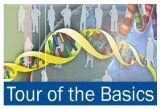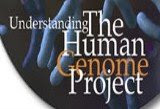Life Science Space (May 27, 2008)--Cancers grow from stem cells. That discovery should translate into better treatment for tumours of all types.
 Image Credit: Wellcome Trust
Image Credit: Wellcome TrustStem cells have a controversial reputation, but in truth they are what makes human life possible. Each tissue in the body grows from a particular sort of stem cell. When it divides, one of its daughters remains a stem cell while the other eventually turns into whatever tissue its mother was designed to produce-be it blood, muscle, nerve or whatever. That is how healthy tissues are renewed, and it is now looking likely that it is how unhealthy tissues are renewed, too. Indeed, many researchers think that the underlying cause of cancer is the brakes coming off the regulatory system that stops normal stem cells from reproducing too much. For one of the most important medical discoveries made in recent years is that cancers, too, have stem cells and that these appear to be the source of the rest of the tumour.
This helps to explain why cancers are so hard to deal with. Treatments that kill the bulk of a tumour, but leave the stem cells alive, are only buying time. On the other hand, if all of a tumour’s stem cells could be killed then it would torpedo the old wisdom that no patient is ever cured of cancer, but merely goes into remission. True cures for cancer would be possible.
The cancer-stem-cell theory, though plausible, was based on animal experiments and its relevance to humans was untested. But a series of studies reported recently at a meeting of the American Association for Cancer Research, in San Diego, has changed that. They suggest both that cancer stem cells are very relevant indeed to survival, and that going after them is an excellent idea.
The relevance of cancer stem cells to survival was shown by William Matsui of the Johns Hopkins Sidney Kimmel Cancer Centre in Baltimore. He looked at samples from 268 people with pancreatic cancer and found that the pattern of stem cells in their tumours predicted how long they would live. Those whose tumours had stem cells at their edges (the ‘invasive margin’ in the militaristic jargon of the cancer-warriors) lived on for an average of 14 months. Those who did not lived an average of 18 months. Not a huge difference, but confirmation that cancer stem cells have an impact on the outcome of disease.
Such stem cells, then, are as bad as theory suggests they should be. The question is, can they be eradicated?
Animal tests suggest this is hard. For reasons as yet unknown, stem cells are resistant to standard cancer chem-otherapies. With this in mind, Jeffrey Rosen and his colleagues at Baylor College of Medicine in Houston, Texas, compared samples from breast-cancer patients taken before and after 12 weeks of chemotherapy. They reasoned that if stem cells were resistant in people as well as mice, then the proportion of stem cells within a tumour would increase as more vulnerable cells were killed off in disproportionate numbers.
And that is exactly what happened. Among women treated with old-fashioned chemotherapy, the share of stem cells within their tumours rose from 5% before treatment to 14% afterwards. Dr Rosen, however, went further. In a parallel experiment he looked at a group of women being treated with a new drug called lapatinib. In these people, the proportion of cancer stem cells decreased from 10% before therapy to 7.5% after they were treated.
Lapatinib is a product of the growing field of molecular medicine—the design of drugs to attack specific protein molecules associated with particular diseases. In this case the protein attacked is HER2, a molecule often found on the surface of breast-tumour cells. Ironically, however, it was not lapatinib’s effect on HER2 that made it potent against stem cells. Lapatinib, it turns out, also inhibits the activity of a protein called the epidermal growth factor receptor, which has been found to be important for stem-cell proliferation. When its activity is blocked, a stem cell’s daughters both lack stem-cell qualities and the chain of ‘stem-cellness’ that the system depends on is broken. Hence the proportion of stem cells in the tumour falls.
It is too early to tell if Dr Rosen’s discovery is a life-prolonging one. But Dr Matsui and his colleague, Carol Ann Huff, are thinking along similar lines.
Alongside Dr Matsui’s pancreatic-cancer work, they have been looking at treating multiple myeloma, a type of blood cancer, with a combination of heavy artillery and guided missiles: high-dose cytotoxic chemotherapy to kill the bulk of the cancer cells and antibodies called rituximab. These bind to a protein called CD20 that sits on the surface of cancer stem cells. It was expected to kill them.
Not every experiment works, and this one did not. As expected, patients left with the fewest cancer stem cells after the therapy lived longest. But this was the luck of the draw, for the rituximab failed to kill the cancer stem cells. Indeed, Dr Huff and Dr Matsui could see stem cells coated with the antibodies alive and well in their samples.
The next step, Dr Huff and Dr Matsui agree, is to bring in even more powerful missiles. Another proprietary antibody that binds to CD20, called tositumomab, is radioactively labelled. If this coats the myeloma stem cells in the way that rituximab does, the radiation should kill them.
Researchers at the University of Michigan, where tositumomab was developed, have already begun such an experiment. Andrzej Jakubowiak, who is leading the trial, says four patients have been on the treatment long enough to be evaluated, and three of them have already been taken off other drugs and appear clinically stable—which for advanced myeloma is an unusually good success rate.
The laboratory data also look promising. The radiological bombs seem to be destroying the cancerous stem cells in exactly the predicted manner—although Dr Jakubowiak rightly cautions that too few patients have been treated to allow firm conclusions.
The upshot of all this is that the stem-cell hypothesis of cancer growth looks a good one. It explains a lot of things, and allows biologists to look at tumours in a new way-almost akin to developing organs, albeit ones with no function and growth that is out of control. That insight, and a better understanding of stem-cell biology, may be the chink in cancer’s armour that people have long been searching for. And that is a truly optimistic thought.
This helps to explain why cancers are so hard to deal with. Treatments that kill the bulk of a tumour, but leave the stem cells alive, are only buying time. On the other hand, if all of a tumour’s stem cells could be killed then it would torpedo the old wisdom that no patient is ever cured of cancer, but merely goes into remission. True cures for cancer would be possible.
The cancer-stem-cell theory, though plausible, was based on animal experiments and its relevance to humans was untested. But a series of studies reported recently at a meeting of the American Association for Cancer Research, in San Diego, has changed that. They suggest both that cancer stem cells are very relevant indeed to survival, and that going after them is an excellent idea.
The relevance of cancer stem cells to survival was shown by William Matsui of the Johns Hopkins Sidney Kimmel Cancer Centre in Baltimore. He looked at samples from 268 people with pancreatic cancer and found that the pattern of stem cells in their tumours predicted how long they would live. Those whose tumours had stem cells at their edges (the ‘invasive margin’ in the militaristic jargon of the cancer-warriors) lived on for an average of 14 months. Those who did not lived an average of 18 months. Not a huge difference, but confirmation that cancer stem cells have an impact on the outcome of disease.
Such stem cells, then, are as bad as theory suggests they should be. The question is, can they be eradicated?
Animal tests suggest this is hard. For reasons as yet unknown, stem cells are resistant to standard cancer chem-otherapies. With this in mind, Jeffrey Rosen and his colleagues at Baylor College of Medicine in Houston, Texas, compared samples from breast-cancer patients taken before and after 12 weeks of chemotherapy. They reasoned that if stem cells were resistant in people as well as mice, then the proportion of stem cells within a tumour would increase as more vulnerable cells were killed off in disproportionate numbers.
And that is exactly what happened. Among women treated with old-fashioned chemotherapy, the share of stem cells within their tumours rose from 5% before treatment to 14% afterwards. Dr Rosen, however, went further. In a parallel experiment he looked at a group of women being treated with a new drug called lapatinib. In these people, the proportion of cancer stem cells decreased from 10% before therapy to 7.5% after they were treated.
Lapatinib is a product of the growing field of molecular medicine—the design of drugs to attack specific protein molecules associated with particular diseases. In this case the protein attacked is HER2, a molecule often found on the surface of breast-tumour cells. Ironically, however, it was not lapatinib’s effect on HER2 that made it potent against stem cells. Lapatinib, it turns out, also inhibits the activity of a protein called the epidermal growth factor receptor, which has been found to be important for stem-cell proliferation. When its activity is blocked, a stem cell’s daughters both lack stem-cell qualities and the chain of ‘stem-cellness’ that the system depends on is broken. Hence the proportion of stem cells in the tumour falls.
It is too early to tell if Dr Rosen’s discovery is a life-prolonging one. But Dr Matsui and his colleague, Carol Ann Huff, are thinking along similar lines.
Alongside Dr Matsui’s pancreatic-cancer work, they have been looking at treating multiple myeloma, a type of blood cancer, with a combination of heavy artillery and guided missiles: high-dose cytotoxic chemotherapy to kill the bulk of the cancer cells and antibodies called rituximab. These bind to a protein called CD20 that sits on the surface of cancer stem cells. It was expected to kill them.
Not every experiment works, and this one did not. As expected, patients left with the fewest cancer stem cells after the therapy lived longest. But this was the luck of the draw, for the rituximab failed to kill the cancer stem cells. Indeed, Dr Huff and Dr Matsui could see stem cells coated with the antibodies alive and well in their samples.
The next step, Dr Huff and Dr Matsui agree, is to bring in even more powerful missiles. Another proprietary antibody that binds to CD20, called tositumomab, is radioactively labelled. If this coats the myeloma stem cells in the way that rituximab does, the radiation should kill them.
Researchers at the University of Michigan, where tositumomab was developed, have already begun such an experiment. Andrzej Jakubowiak, who is leading the trial, says four patients have been on the treatment long enough to be evaluated, and three of them have already been taken off other drugs and appear clinically stable—which for advanced myeloma is an unusually good success rate.
The laboratory data also look promising. The radiological bombs seem to be destroying the cancerous stem cells in exactly the predicted manner—although Dr Jakubowiak rightly cautions that too few patients have been treated to allow firm conclusions.
The upshot of all this is that the stem-cell hypothesis of cancer growth looks a good one. It explains a lot of things, and allows biologists to look at tumours in a new way-almost akin to developing organs, albeit ones with no function and growth that is out of control. That insight, and a better understanding of stem-cell biology, may be the chink in cancer’s armour that people have long been searching for. And that is a truly optimistic thought.
-------------------------------------------------------------------
article provided from The Economist: http://www.economist.com/science/displaystory.cfm?story_id=11043891
.jpg)
.jpg)
.jpg)

.jpg)
.jpg)
No comments:
Post a Comment